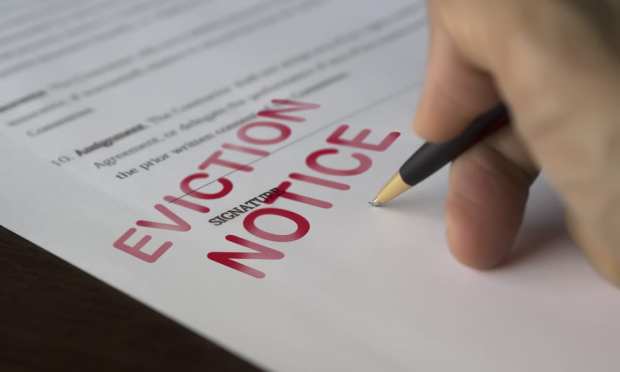Till CEO: How Flexible Rent Payments Helps Landlords – And Tenants – Avoid Evictions

Amid the lingering economic aftershocks of the pandemic looms a housing crisis — if millions of people are unable to pay the rent.
After trillions of dollars of stimulus payments, with perhaps more to come, it may seem like the wave of evictions many observers have predicted has been staved off.
However, in an interview with Karen Webster, David Sullivan, founder of the FinTech Till, noted that there’s a “false sense of security” in place.
The reprieve granted by sweetened unemployment benefits and one-off checks may be short-lived.
Rent is a lagging indicator, he noted, and delinquencies may grow after leading indicators such as consumers’ credit card bills payments (which, admittedly, they don’t need to pay to live) head south.
Said Sullivan, as the lifelines fade: “I believe we will see a ‘delinquency challenge’ in rental housing over the next 12 months.”
Amid such rocky, uncertain and unprecedented times in the U.S., is it time, now, for flexible rent?
Sullivan said renters and landlords — through platform models — can work together to find solutions that have benefits for all stakeholders, keeping tenants in their homes, and ensuring their landlords have stable cash flow.
The FinTech, which offers a platform that helps create customized payment plans that take into account renters’ cash flow situations.
Earlier this month, Till announced that it raised $8 million in a seed funding round.
Common Ground For Tenants And Landlords
The timing of using tech to find common ground between renters and landlords may seem pressing, as there’s roughly $50 billion in rent in the U.S. rental market right now, according to CNN. And, as Sullivan said, people are paying as much as 50 percent of their net income, just on housing alone — easily among their biggest expenses.
In an uneven job market, covering the basic need of shelter is akin to walking a financial tightrope.
“The reality is we have had housing affordability and eviction crises and those existed over the last decade,” said Sullivan. “It’s just become top of mind for our country today.”
The simple reality today for most renters, he said, is that whenever external forces interrupt cash flow or emergency expenses arise, tenants often must decide between, say, fixing their car or paying the landlord.
The current state of the market shines a spotlight on pain points and looming trouble – namely that landlords decide on tenants (and thus underwrite risk) based on the latter’s gross income as they enter into a 12-month lease.
“They basically have no ongoing understanding of how a tenant’s financial life has changed,” said Sullivan, “so they have no way of understanding how to work with a renter.
Strict terms govern the leases themselves: Late fees hit on the fifth of the month — and evictions come on the 15th.
Said Sullivan: “There is no flexibility for how rent is structured and paid and understood. We believe that over the next decade, rental payments will shift towards being flexibly structured within the lease.”
To that end, Till helps underwrite and restructure the rent in partnership with the landlords — who aim, of course, to collect on their rent receivables (Till does not take the owed rent onto its books).
He told Webster that though the use of analytics and customized payment plans — which take into account lumpy income — eviction rates could be cut by 50 percent. The company also has a Rebound offering, which enables renters to begin paying delinquent balances over a set timeframe.
With a nod toward just how lumpy income can be in real life (rather than just looking at gross income), Sullivan noted that consumers who rent their housing have 25 percent month to month income volatility, especially if they work in the gig economy.
Of the platform’s data analytics and algorithms (which also can match renters to various rental communities), “we can look at government assistance (15 percent to 20 percent of Till’s renter base), unemployment support, gig economy support, the side hustle, childcare, alimony…and beyond. So we can look at all of these different cash flows and we can look at how they fluctuate across month and over time and throughout seasonality periods,” said Webster.
Till gets paid by renters who enter into customized payment plans that break rental payments into a series of smaller payments — and in those cases where renters are delinquent by at least one month, the company is paid by landlords.
Working together to avoid evictions has positive ripple effects throughout the economy — beyond just the black marks on credit profiles, noted Sullivan, and the costs incurred by landlords. There’s the societal impact of displaced families, too.
The Roadmap
At present, Till’s platform stretches across 15 states and 30,000 units.
About the stimulus increase that may have left renters with a bit of breathing room and what’s to come: During the months of May and June, Till saw a 15 percent increase in net income tied to stimulus checks and a boost to unemployment benefits — but the impact has been fading.
“That’s one of the reasons we believe that rent payment will be off more materially in August and September,” predicted Sullivan.
“For the next year and year and a half, we’ll focus on rent. There’s ways for us to make it a faster, more efficient, better experience for the renter and the landlord partner,” he said, including a (free) rent reporting feature slated to be unveiled in the coming months.